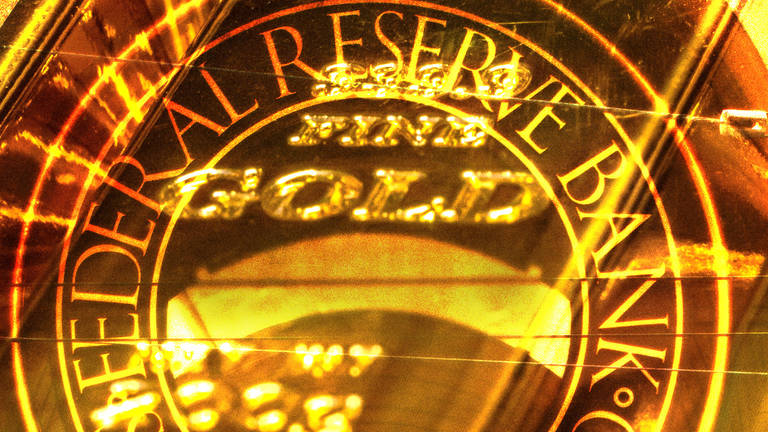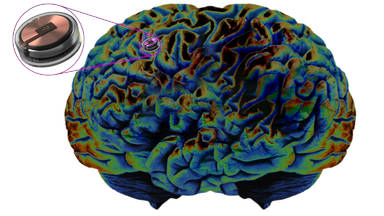
Gold is the strongest commodity of all time not only has it been used for millennia but serves as a phenomenal store of value and protection against market downturns. In the history class, we have all heard of the time when alcohol was banned, and the time that Cuban cigars were banned. But did you know that there was a time when gold was banned?
Banning something that has been so fundamental and integral to our civilization for thousands of years seems inconceivable, but this is exactly what the U.S. government did for 41 straight years between 1933 and 1974.
It all started in the 1920s when everything seemed to be going great, World War I had just ended and it seemed that the United States was heading towards a period full of growth, prosperity, and peace, but unfortunately, a side effect that often accompanies the good times is complacency. People were complacent, financial institutions were complacent, and the government was complacent. This led to investors making massive deals on stocks and speculation, banks lending far more than they can afford, and the government just let it all happen.
Because of this, the roaring decade of the ’20s would end with a bang as the US headed into the great depression. One of the first things people do during an economic downturn is to reduce risk and pay off debt. So it is no surprise that people wanted to withdraw their money from banks and turn it into gold or pay off outstanding debt. But as we mentioned earlier, banks were lending far more money than they could afford. As a result, by 1933, when everyone was trying to withdraw their money at the same time, many banks were in fact going bankrupt.
Nearly half of all banks in America had gone bankrupt. Meanwhile, the U.S. government was watching the whole crisis unfold, but they couldn’t actually do much about it. In modern times, whether it was the dot-com bubble, the 2008 financial crisis, or pandemic, the Federal Reserve is ready to cut rates and pump stimulus. The Federal Reserve was established in 1913, so it was around during the great depression, but at the time they could not just go out and print trillions of dollars as they do today. The dollar was backed by gold, which means that the government had to hold a specific amount of gold for every dollar in circulation, ideally, this number would be 100% which means that every single dollar was backed by gold.
However, this gives the government very little flexibility, so this number was actually 40%, which means that 40% in circulation is supported by gold, which was intended to prevent the government from printing too much money and ensuring that at least the dollar is somewhat supported by a real asset.
It must be pointed out, however, that this does not necessarily prevent them from printing money, but they were under 40% requirement, and this led to a bigger and bigger difference between the amount of government gold and the amount of money in circulation, and people were not unaware of this.
It was the main reason millions of people traded their cash for gold, a dynamic that created a very unique situation. The government needed gold to stimulate the economy, while the people had to give away their own gold and trade with the cash to help stimulate the economy. Hence, from a macroeconomic point of view, the solution to the crisis was quite clear. Just take away all the gold from people and transfer it to the government.
To do so, President Roosevelt issued Presidential Proclamation 2039, on March 6th, 1933 which introduced a National Bank holiday and simply blocked people from accessing the whole banking system, for four full days. Americans have not been allowed to exchange their cash for gold or silver, and banks have not been allowed to export their gold, they cannot even make withdrawals, deposits, transfers, or loans. Basically, the entire banking system was shut down to prevent more banks from failing.
During the closure, Congress convened to pass the Emergency Banking Act of 1933. This legislation required examiners to analyze the financial situation of each bank and allow the bank to reopen if it was found financially secure. The legislation also allowed the Federal Reserve to print more money and send it to the banks to improve liquidity. President Franklin D. Roosevelt would famously say that I can assure you, my friends, that it is safer to keep your money in a reopened bank than to keep it under your mattress. Fortunately, people would trust them, and once these banks reopened, and would actually deposit their cash in these banks. This act managed to avoid a short-term crisis, but the underlying problem was still very much there.
On April 5, 1933, President Roosevelt would come out with Executive Order 6102 aka the Gold Ban.
All U.S. citizens were required to surrender all their gold bullion coins and gold certificates excessing the value of $100 to the Federal Reserve by May 1. In exchange, the Federal Reserve would have paid them $20.67 per ounce. If a person held their gold and the authorities found out, they could be put in jail for up to 10 years and/or fined $10,000 (about $167,000 today). You may think this in itself is outrageously unfair, but just wait to hear what happened next.
In January 1934, after most of the gold was collected, the treasury department changed the price of gold from $20.67 to $35 an ounce. So the government basically forced people to give up all their gold at a low price and once they collected all the gold, they raised the price.
This is, of course, extremely unfair to the people who held the gold, but it seemed like it was the best decision for the country as a whole. The ex-owners of the gold were understandably dissatisfied with this explanation, and many of them would sue the government.
The dissenting opinion was written by Judge James Clark McReynolds who called the other judges, stating that the court was allowing the government to ignore contractual obligations for its benefit.
Honestly, this was the truth, but the supreme court would let it slip and there was really nothing the victims could do about it. Some would complain, and many would have illegally withheld their gold. But sooner or later, most people have moved on.
However, as you may have noticed, the US government actually did nothing to solve the fundamental problem which was that the Federal Reserve was struggling to stick to the gold reserve ratio, but now that the government had ordered all the gold in the US, this would no longer be a problem for a few more decades.
Meanwhile, the decision to ban the ownership of gold seemed like a brilliant move after the end of World War II, the Western world would adopt the Bretton Woods system, which was basically an agreement to keep the world currencies tied to the dollar, and the United States would return the dollar to gold.
In the beginning, this system worked almost perfectly. Japan and Europe were much more affected by World War II than the United States. So the demand for US goods was extremely high, and it made sense to use the US dollar as the standard world currency.
In addition, the US held 75% of the world’s gold reserves, which meant they had the best support for their respective currency. However, as the European and Japanese economies began to grow in the 1960s, the demand for US dollars declined. As European and Japanese exports became more competitive. Despite this, the Federal Reserve continued to print more and more money while its gold reserves were not really increasing.
So the Federal Reserve goes back to square one. They needed more gold to keep up with the money printing. But this time, they could not just go ahead and ban gold all over the world and accumulate all the gold. So the United States would settle down with the only solution they had, which was to abandon the gold standard.
On August 15, 1971, President Nixon announced that the United States would no longer trade dollars for gold. He ordered Secretary Connelly to temporarily suspend the dollar’s convertibility into gold and other reserve assets, except under certain amounts and conditions determined to be in the interest of monetary stability and the best interest of the United States.
Right after that, inflation would explode as people did not trust the US dollar nearly as much since it was no longer backed by gold. The damage had already been done and there was no longer any reason for the Federal Reserve to try to hoard all the gold in the United States. Hence, on December 31, 1974, President Ford would sign Executive Order 11825 repealing the Executive Order that President Roosevelt signed 41 years ago. That same day Congress would pass legislation allowing Americans to own gold again, and a few years later, in 1977, Congress would actually revoke the president’s authority to regulate gold unless the United States is involved in a war. So looking to the future, it is highly unlikely that such a ban on gold will repeat itself because in the current economic environment the government simply doesn’t need that much gold.









